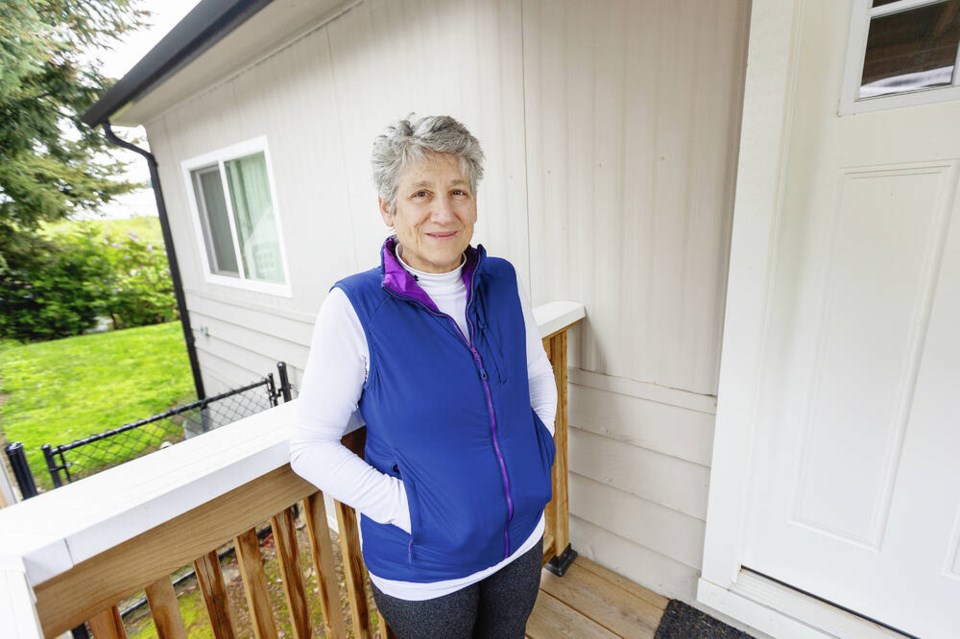Langford senior Mary Fair has been eagerly waiting for the federal government’s free dental plan to begin next month, expecting she could just book an appointment with her dentist to take advantage of it.
But last month, the 71-year-old phoned her dentist’s office and learned they had not yet enrolled as a provider. She called four more dentists, and got the same story.
“I actually have postponed major dental work because of finances, so for me, I was waiting very eagerly for this to take effect,” said Fair. “I would say it’s almost a year that I have been waiting in anticipation for this care plan to to go live.”
Fair, who is single and lives in a mobile home, said she receives about $25,000 a year in Canada Pension Plan and Old Age Security, which puts her in the low-income category and makes her eligible for the new Canadian Dental Care Plan.
Once fully implemented, the $13-billion plan is expected to serve more than nine million low and middle-income Canadians who don’t have other private dental insurance.
The federal government has been sending out letters to those eligible and inviting them to apply, and about 1.7 million Canadians have already enrolled.
The B.C. Dental Association, however, has suggested members wait to get all of the information and details of the plan from the federal government before deciding whether to enrol or not.
Three-quarters of the just over 4,000 dentists in B.C. have told the association in initial surveys they won’t be participating.
Dr. Rob Wolanski, president of the B.C. Dental Association, says the federal government’s claims of a free dental care plan may give patients “unrealistic expectations” that all procedures for all patients are covered.
Depending on the procedure, the patient’s income or the fees set by the dentist’s office, the total bill may only be subsidized, he said.
“They’ve created this expectation in the public, and who’s going to bear the brunt of that anger when they come into the office and find out it’s not free?” he said.
The federal government says the paperwork will be no more onerous than for any other insurance company, but Wolanski rejects that characterization.
“It’s not just like any other dental plan — it’s more accurately termed as a subsidized plan,” he said, noting there are federal cost-containment strategies within the plan. Orthodontics, for example, are not covered, he said.
To attract greater participation, the federal government announced last week that as of July 8, oral health providers can direct-bill Sun Life for services provided on a claim-by-claim basis without formally signing up as a provider on the plan.
“This will make it easier for providers to treat patients and submit [Canadian Dental Care Plan] claims to Sun Life for direct reimbursement, whether or not they choose to formally participate,” said Christopher Aoun, the federal health minister’s press secretary.
Reimbursement through the plan is expected to reach providers within two business days, he said.
“This also means that CDCP clients can see any oral health provider they choose for their care, if the provider agrees to direct-bill Sun Life for services provided under the plan,” said Aoun.
Wolanski agrees the newly announced changes will allow patients to receive services on a “one-off” basis without providers having to sign onto the plan, but he worries that by submitting even one form, “you’re agreeing implicitly to the terms and conditions, and that’s problematic for us because we see the terms and conditions have many issues.”
Wolanski said the plan, which should have taken about five years to formulate, was rushed for political reasons, which has left the profession in a “pickle.”
“It’s like we’re test pilots — we don’t know how this plane is going to fly until we actually fly it,” said Wolanski, who added that dentists are also concerned that once they sign onto the plan, the government could change the terms and conditions.
Fair said while she qualifies for full coverage, if her dentist is unhappy with the fee under the Canadian Dental Care Plan guidelines, or if a certain service isn’t fully covered, she wouldn’t object to paying a bit more. Anything would help, she said.
The plan will start covering most preventive, diagnostic and restorative services next month, with other services that require pre-authorization, such as crowns, available beginning in November.
To qualify, you have to be a Canadian resident with an annual adjusted family net income less than $90,000 who does not have other dental insurance — through an employer, family member’s plan or professional or student organization, for example — with the exception of government social programs. You also have to have filed an income tax return in the previous year.
Enrollment for those age 70 and older is open now, with eligible seniors age 65 and older able to enroll starting in May. Those accepted receive a card to bring to their dentists, or they can search a registry to find one of more than 5,000 oral health providers — including dentists, denturists, hygienists, and specialists — already participating in the plan.
In June, those with a valid Disability Tax Credit certificate and children under 18 will be able to apply to the plan online. All other eligible Canadian residents between the ages of 18 and 64 will be able to apply starting in 2025.
Federal Health Minister Mark Holland said in a statement last week that the “support and participation of oral health providers across the country is essential to the success of the Canadian Dental Care Plan.”
Wolanski said he’s done hundreds of thousands of dollars of free dental work for low-income individuals over his 36-year career, noting the Canadian Dental Association has been calling for some kind of plan to help those who can’t afford dental care for decades.
For more information on the Canadian Dental Care Plan, visit the Sun Life website or Canada.ca/dental.



